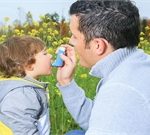
Microbes that live in a child’s upper airway could be linked to severe asthma attacks, new research suggests. For parents, it’s an all-too familiar scene: A child’s seemingly harmless cough quickly escalates to wheezing, gasping and an urgent need for emergency treatment. Asthma is the leading chronic disease in kids and third-most common cause of hospitalization among those under 15, according to the Asthma and Allergy Foundation of America. Now, a new study found an association between asthma flare-ups in children and the makeup of the upper-airway microbiome, communities of microscopic organisms that include bacteria. “In the future, we wish to understand whether the upper-airway bacteria can play a causal role in the severity of asthma symptoms,” said study author Dr. Yanjiao Zhou, who conducted the research at Washington University School of Medicine in St. Louis. She is now an assistant professor of medicine at UConn Health in Farmington, Conn. Zhou and her colleagues collected data on 214 school-aged children who were part of a clinical trial. Participants had mild to moderate asthma that was being treated with daily inhaled corticosteroids. Nasal samples were collected twice — once when asthma was under control, and again when kids had the signs of an emerging flare-up, what the investigators called the “yellow zone.” The researchers said kids who had early warning signs of a flare-up were more… read on >














